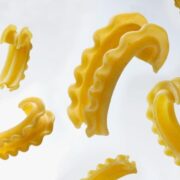
When a patient’s vital organs begin to fail, transplantation often emerges as the last resort. Although this procedure can be life-saving, it’s far from a simple solution and not without grave risks. Doctors have to be selective in distributing the limited number of available donor organs, checking for health, compatibility, and long-term results.
Surgeons often have to worry about a recipient’s immune system because the transplanted organ’s cells can be considered foreign invaders, triggering a rejection response. While immune-suppressing medications can mitigate this, they also leave patients susceptible to other diseases.
Researchers have long dreamt of being able to just grow a heart or set of lungs from someone’s own tissue, avoiding both the limited number of organs available and doing away with the possibility of rejection.
Now, with bioprinting technology, that dream may soon become a reality.
Under a new $26.3 million federal contract from the Advanced Research Projects Agency for Health (ARPA-H), a multidisciplinary team of researchers at Stanford University aims to bioprint a fully functioning human heart and implant it in a living pig within five years, according to Stanford University.
“It’s truly a moonshot effort, but the raw ingredients for bioprinting a complete and complex human organ are now in place for this big push,” said Mark Skylar-Scott, assistant professor of bioengineering in the Schools of Engineering and Medicine, a member of the Stanford Cardiovascular Institute, and principal investigator on the project.
The vision of fabricating bespoke, patient-specific human organs – livers, lungs, kidneys, brain, and, yes, a human heart – has been a tantalizing dream of modern medicine for years, but only recently has stem cell science, the scale of cell production, and 3D bioprinting advanced to a point where the dream is within reach.
Bioprinting is a 3D printing technology that, instead of using plastic or metal, prints living tissues cell by cell. The key development, Skylar-Scott said, is that we can now print cells and blood vessels into those tissues.
“With vasculature comes the ability to make large and thick tissues that can be implanted and survive,” Skylar-Scott said. “Thus begins the era of organ biofabrication.”
For years, researchers have been using bioprinting to do other organs. Last year, in San Antonio, Texas, for example, Dr. Arturo Bonilla implanted an outer ear on a 20-year-old woman born without one. The ear on the woman’s right side was digitally designed and constructed to match the ear on her left side.
Fortune Magazine reported in February that “for Bonilla, a pediatric microtia surgeon (a doctor who treats birth defects of the ear) for more than 25 years and a recognized expert in the field, such a procedure would normally be routine. But this case had a twist: For the first time, the ear he was implanting was the product of a 3D bioprinter using the woman’s own cartilage cells.
The implant procedure, Bonilla told me, was “very uneventful.” It is a vast understatement, all things considered.”
The magazine concluded that “most researchers put the idea of full-sized 3D-printed organ transplantation in humans at somewhere between 20 and 30 years away.”
It looks like things are moving faster than thought.










Mass produce organs per hospital from DNA etc
Needed